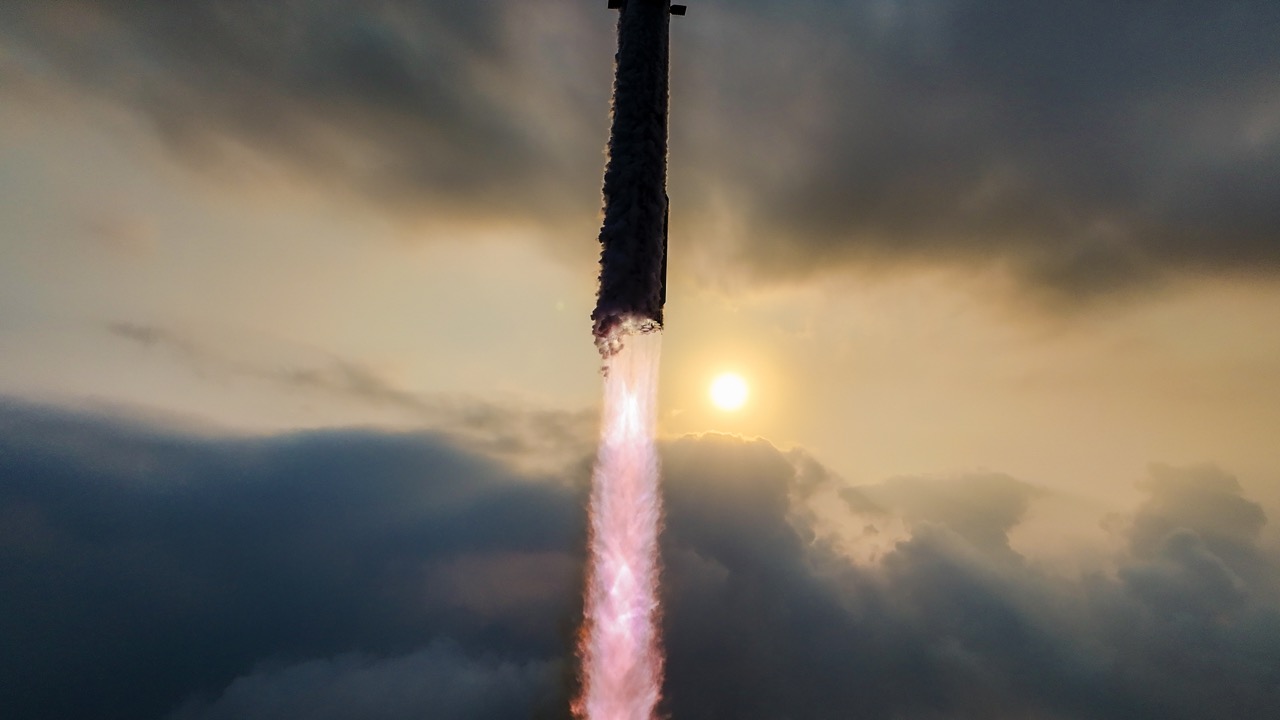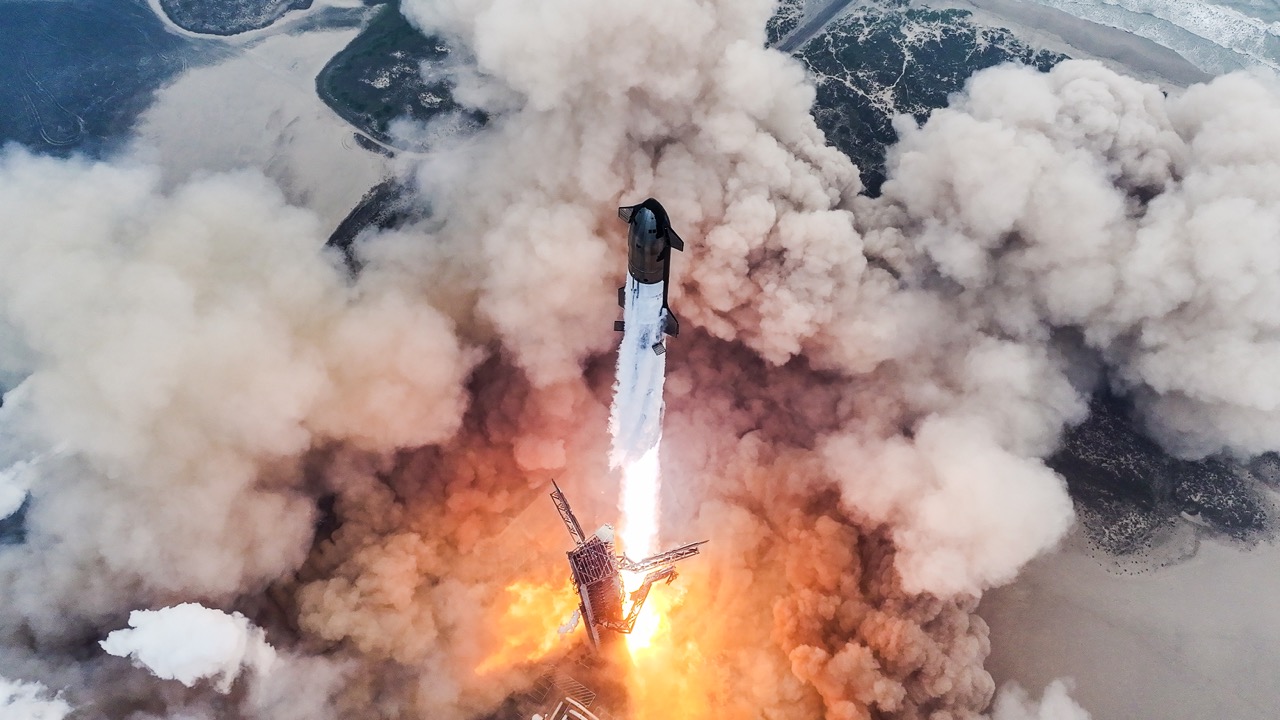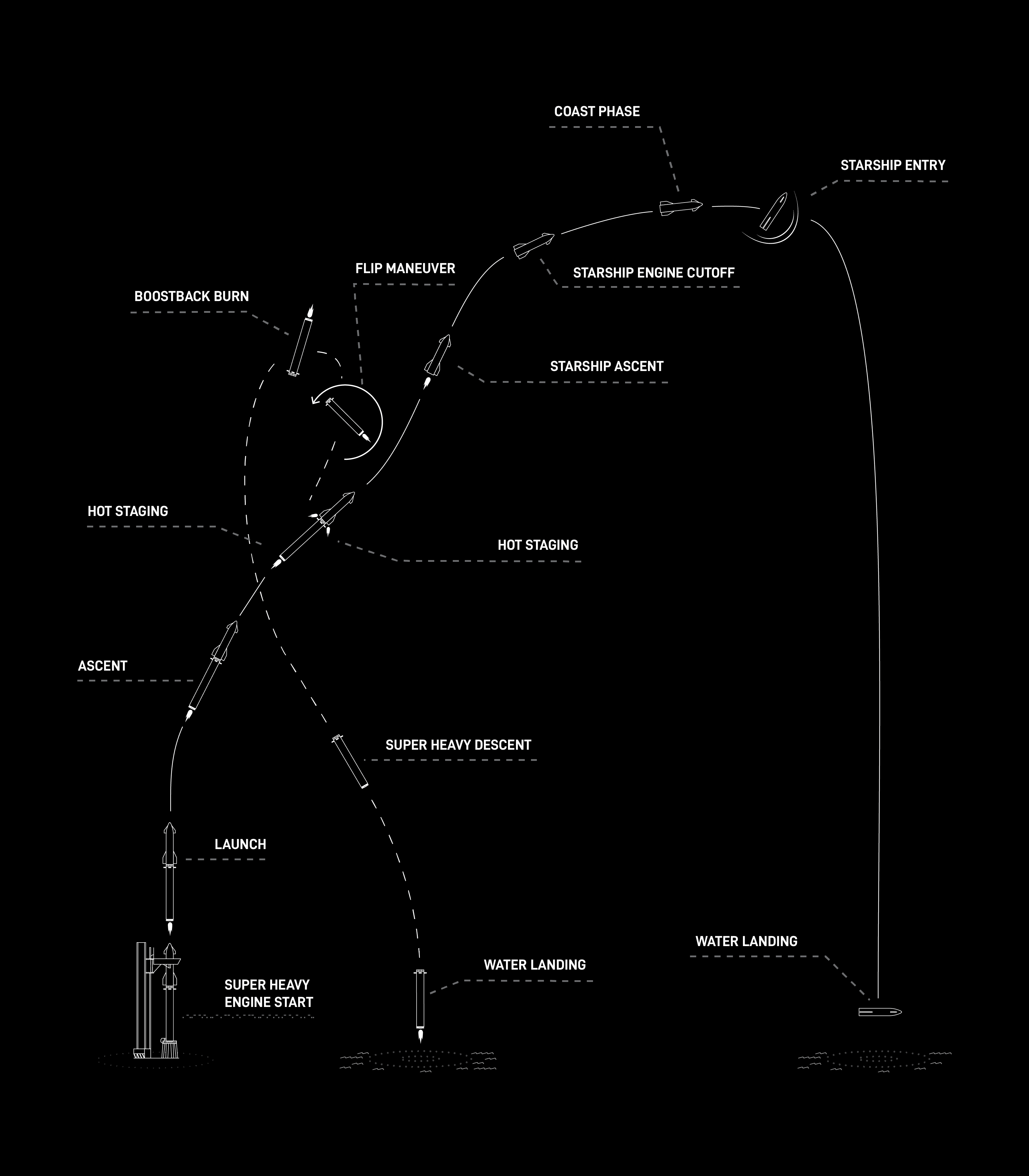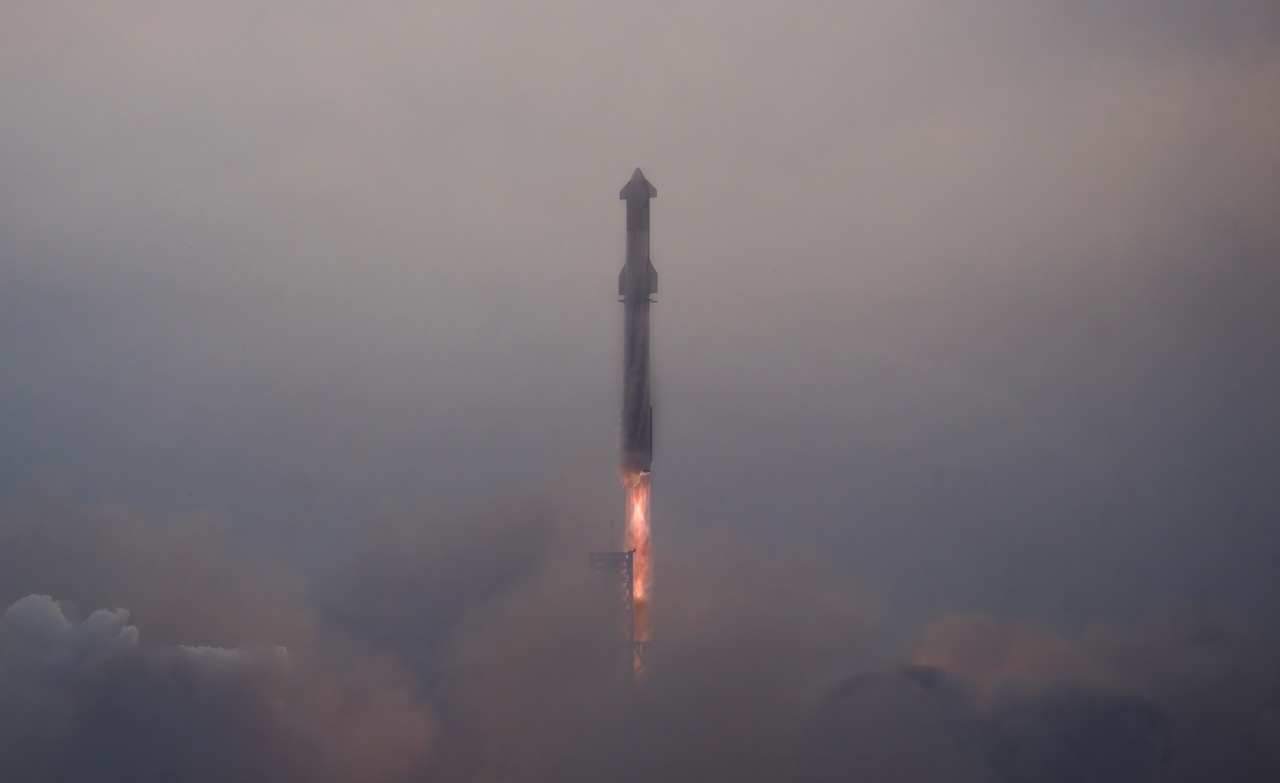AI Summary
SpaceX is launching its Starship spacecraft on June 6 for its fourth flight test, aiming to demonstrate reusable transportation systems for crew and cargo to Earth orbit, the Moon, and Mars. The test follows significant strides made in previous tests, including successful reentry, payload door operations, and propellant transfers, and aims to achieve a controlled landing of Starship and its booster stage, Super Heavy.
SpaceX’s Starship, the most powerful launch vehicle ever built, launched Thursday and achieved key objectives for its fourth test flight that demonstrated the vehicle’s reusability. This was the company’s second uncrewed test of 2024. Launch occurred from the private Starbase facility in Boca Chica, Texas, at 7:50 a.m. CT (8:50 a.m. ET), and the company streamed live coverage on X drawing millions of viewers, see video below:
The Starship launch system includes the upper Starship spacecraft and a rocket booster known as the Super Heavy. Of the rocket’s 33 engines, 32 lit during launch, according to the SpaceX broadcast.
Building Upon the Success of Flight Test 3
Starship's third flight test, which took place earlier this year, made significant strides towards the goal of rapidly reliable reusable rockets. The test achieved several exciting firsts, including:
- The first Starship reentry from space
- The first-ever opening and closing of Starship's payload door in space
- A successful propellant transfer demonstration
The data gathered from the propellant transfer demonstration is particularly valuable, as it paves the way for future ship-to-ship propellant transfers. This capability will be crucial for missions like returning astronauts to the Moon under NASA's Artemis program and, eventually, sending humans to Mars.
Objectives of Flight Test 4
While the third flight test focused on achieving orbit, the fourth test shifts the focus to demonstrating the ability to return and reuse both Starship and Super Heavy, the spacecraft's booster stage. The primary objectives of this test are:
- Executing a landing burn and soft splashdown in the Gulf of Mexico with the Super Heavy booster
- Achieving a controlled entry of Starship
To accomplish these objectives, SpaceX has implemented several software and hardware upgrades based on lessons learned from Flight 3. These upgrades aim to increase overall reliability and address any issues identified in the previous test.
Operational Changes and Flight Path
In addition to the technical upgrades, SpaceX will also implement operational changes to optimize the flight. One notable change is the jettison of the Super Heavy's hot-stage following boostback. This maneuver will reduce the booster's mass for the final phase of flight, improving its chances of a successful landing and recovery.
Flight 4 will follow a similar trajectory to the previous flight test, with Starship targeted to splashdown in the Indian
Ocean. This flight path eliminates the need for a deorbit burn for reentry, maximizing public safety while still allowing SpaceX to meet the primary objective of a controlled Starship reentry. See below the detail flight test timeline:
The Future of Spaceflight
The fourth flight test of Starship represents another significant step towards the rapidly reusable future of spaceflight. By demonstrating the ability to return and reuse both Starship and Super Heavy, SpaceX is laying the groundwork for a new era of space exploration and commercialization.
As SpaceX continues to rapidly develop Starship, they are putting flight hardware in a flight environment to learn as quickly as possible. This iterative approach allows them to refine their designs and procedures, bringing us closer to the day when fully reusable transportation systems will carry crew and cargo to Earth orbit, the Moon, Mars, and beyond.
The success of Flight Test 4 will not only be a triumph for SpaceX but for the entire space industry and humanity as a whole. As we witness these incredible feats of engineering and innovation, we can't help but feel inspired by the possibilities that lie ahead. With each flight test, we are one step closer to making our dreams of exploring the cosmos a reality, and Flight Test 4 promises to be another giant leap in that direction.
Recent Posts

















